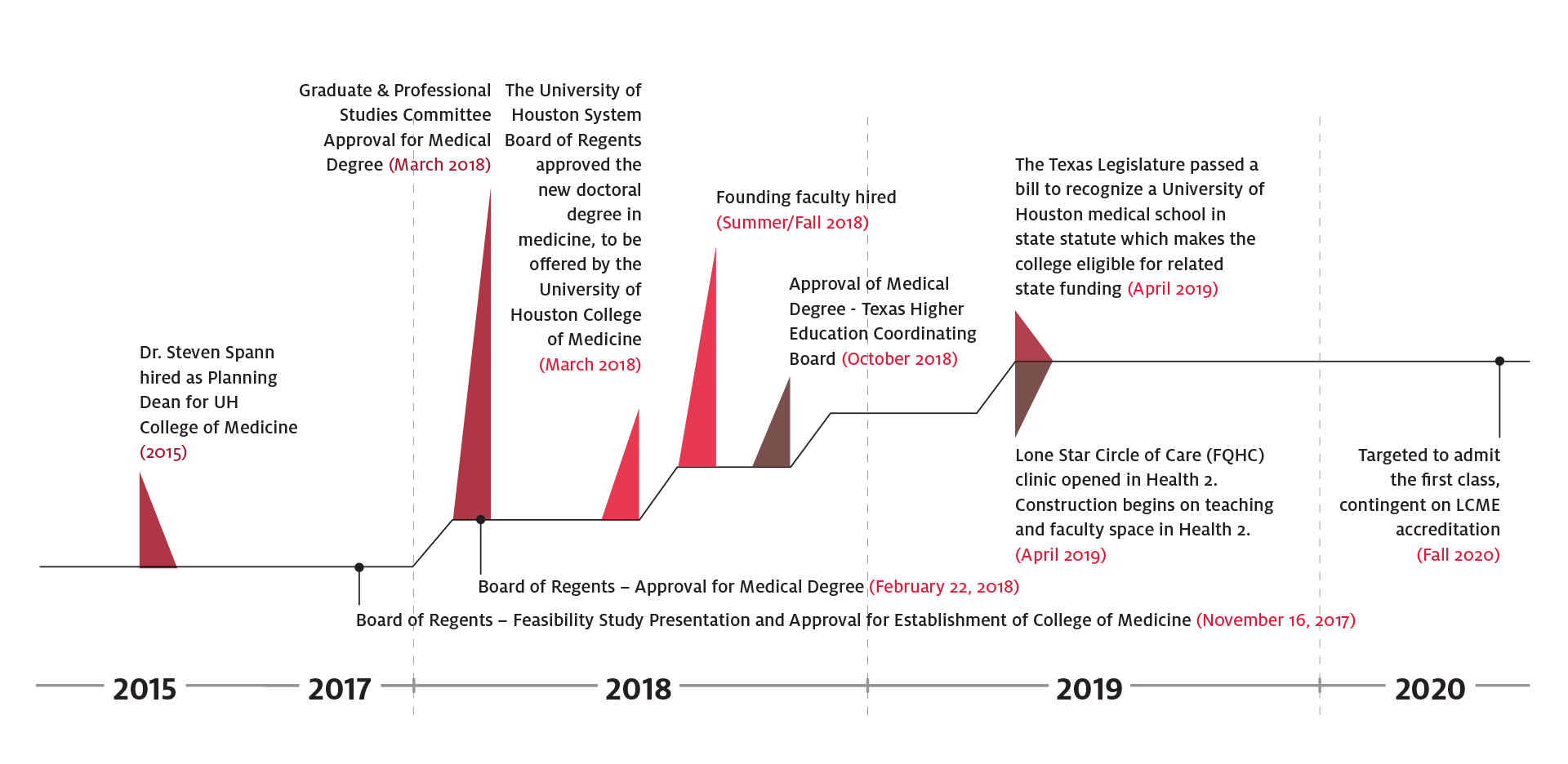It’s not obvious if you live in an urban middle class neighborhood or in the shadows of the largest medical center in the world, but in rural areas woven throughout the fourth largest city in the nation there are health care deserts. Hospitals and clinics are rare or nonexistent, and residents have limited means to access preventative health care.
Texas has roughly 20,000 active primary care physicians. According to the Association of American Medical Colleges, the state will need to add another 6,400 by 2030. This deficit is what has driven the University of Houston to navigate a path laden with political, financial and administrative hurdles to establish a College of Medicine. Primary care will be the focus of this new College of Medicine. The last medical school in Houston opened in 1972 when the population of the metropolitan area was a third of today’s more than six million.
The College of Medicine has received broad community support throughout Houston, including UH alumni who rose to the occasion last fall, sending letters of support to their legislators.


